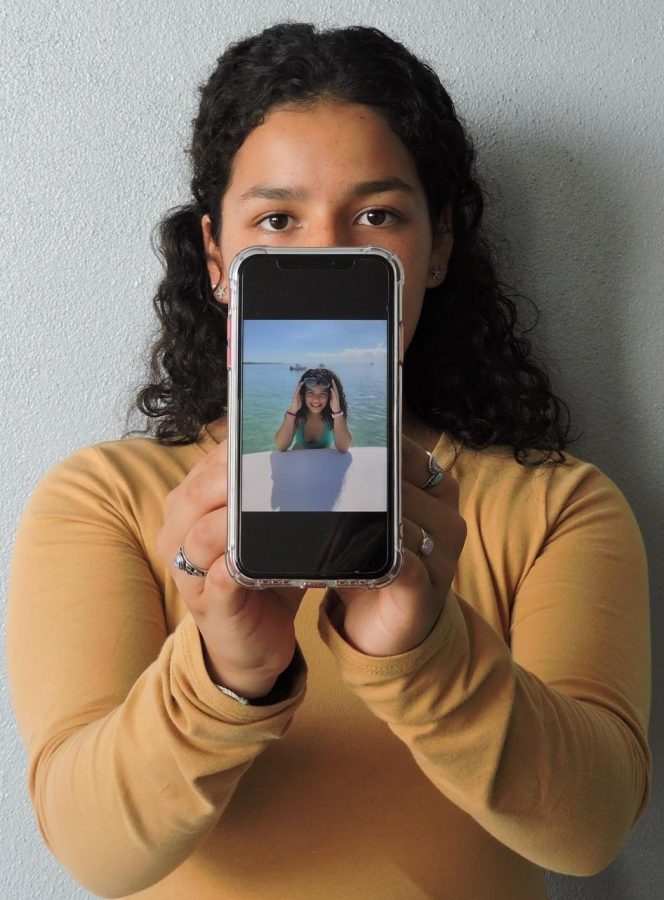Beauty Is in the Eye of the Cell Phone Beholder
SBHS students dish on unattainable beauty standards set by social media
Sophomore Ariana Miranda showcases her favorite edited selfie.
May 21, 2019
Ashley Sarmiento is a short, curly-haired sophomore, whose bubbly smile and warm laugh is infectious. Clad in skinny jeans and a t-shirt, topped with her nerdy glasses, she’s an adorable teen.
Like many teens herself, she struggles daily with living up to social media standards in the modern world.
Social media has slowly made headway into presenting boys and girls with their definition of what is “perfect” or “beautiful,” and it has started to make an enormous impact on self-esteem.
The impact starts at the beginning of kids’ teenage years when they are usually first exposed to social media. These teens, which mostly include girls, begin to view other people and photos and focus on what they would change about themselves.
So now with social media apart of our everyday lives, teens experience these images which reflect on social media’s idea of “perfect beauty.”
“Social media sets certain beauty standards on everyone, especially teens since they believe they have to be the prettiest on their timeline or at least decent looking,” said sophomore Ariana Miranda.
With this mindset, it is likely for teens to become diagnosed with eating disorders and other forms of mental illnesses.
Jennifer Mills, an associate professor in the Department of Psychology at York University in Toronto, Canada, and Jacqueline Hogue, a Ph.D. student in the department’s Clinical Program, researched how social media affects young adolescents. According to the information recorded by Mills and Hogue, among women, making comparisons to influencers in turn creates negative body image.
It seems to be true, that teens idolize many celebrities, models, and many more famous people who influence social media and pop culture, referring to them as an ideal beauty standard.
Teens look up to these influencers, so much that they even modify their facial features and body to become similar to their idols or they change their face to keep up with beauty standards.
According to guidelines published in Plastic and Reconstructive Surgery, the official medical journal of American Society of Plastic Surgeons, many teenagers today are seeking plastic surgery.
The plastic surgery procedures include rhinoplasty (nose reconstruction), operations for cleft lips, breast reductions and otoplasty (surgery to minimize the appearance of big ears on younger children and teens).
Around 250,000 cosmetic procedures were performed on patients from ages 13 to 19 in 2017. Cosmetic surgery procedures at large jumped 11% in 2017, with patients spending more than $6.5 million.
SBHS sophomore Dynasty Dias-Maxwell thinks that influencers should speak out and not so much give disclaimers, but include body positivity and encourage people to be confident with the way they are.
“More personalities who are big on social media should be like “Hey you don’t need to look like me, and everyone is different” and give disclaimers,” said Dias-Maxwell.
Teen years are about finding yourself and growing up, comfortable in their skin and not feel the need to change anything about them.
“Don’t let what other people say or do affect you, go on your own route, go on your own mindset path; you have to focus on yourself, and not what other people think,” said Miranda.



